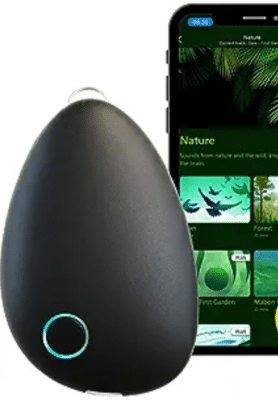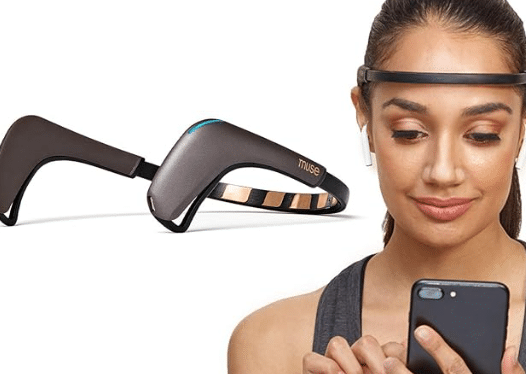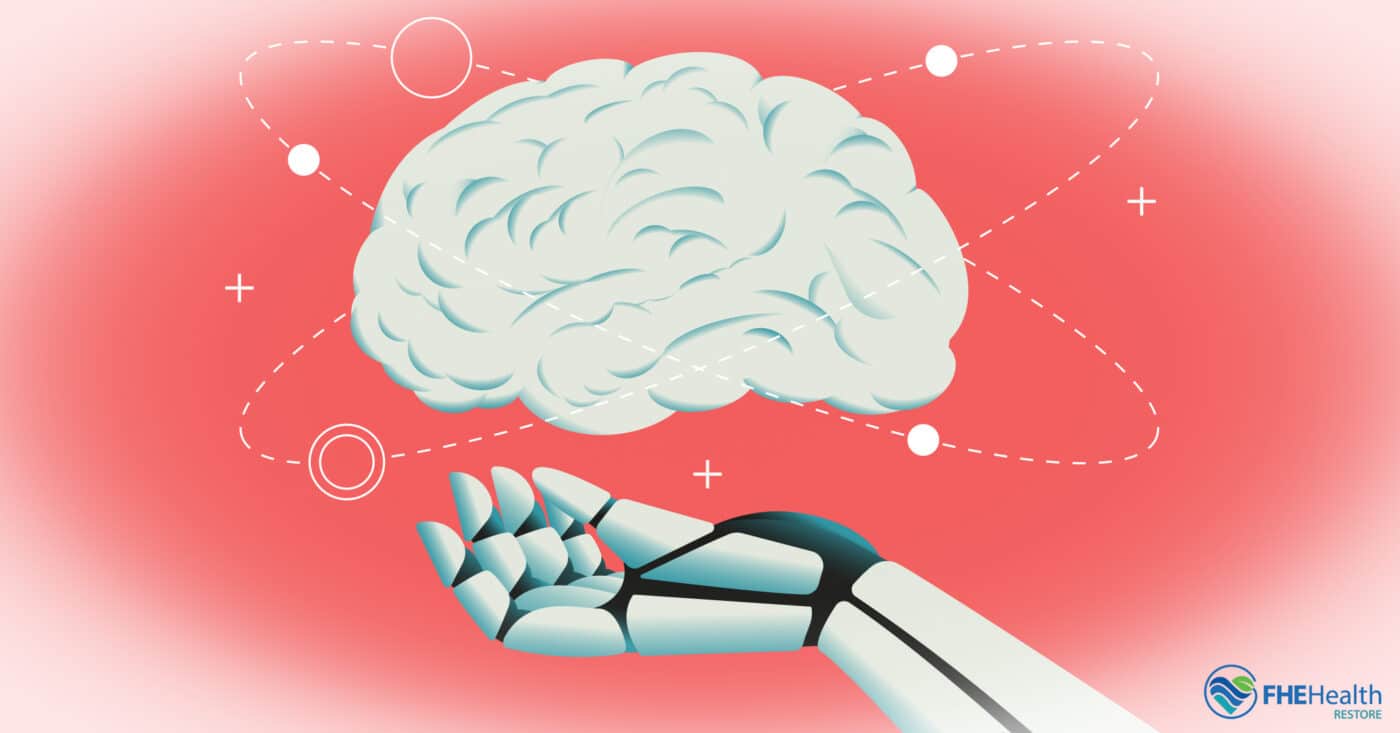Stress is one of the most difficult-to-manage parts of our daily lives. If you’re unable to limit your stress levels, it can affect your mood, sleep, appetite, and so many other aspects of your mental and physical health. Long-term stress has links to serious conditions like obesity, Alzheimer’s disease, and cardiovascular disease, among others.
Because stress is bountiful in modern life and stress management is often complex, many people just want simpler options. Several companies have risen to this challenge of simple stress management, offering a range of stress relief devices.
However, these devices can be quite controversial. Some testimonials state that they help with stress when nothing else does, while other people claim they are nothing more than pseudoscience.
So what’s the truth? We’ll dive into these anti-anxiety devices and determine which, if any, are worth trying out.
The Rise of Mental Health Gadgets: Hype or Help?
Coping with stress is, at a minimum, difficult. We all feel stress in unique ways and we all relieve our stress differently, as well. This is what makes the promises of these gadgets so appealing. After all, who wouldn’t want a wearable device that directly reduces stress?
The theories behind wearable technology being able to help with mental health are solid. Stress is measurable. When stress levels increase, there are heart rate, perspiration, and sleep changes, among other trackable differences. Ideally, different sensors would take measurements in real-time and then respond to those measurements directly, creating a custom stress relief treatment.
However, experiencing those symptoms doesn’t necessarily mean that you are feeling stressed at that moment. Also, feeling stressed isn’t always bad. One-size-fits-all treatments are appealing but rarely effective.
Further, of the evidence-based devices that currently exist and are safe, the vast majority are simple heart rate and activity trackers. They simply can’t collect the data that’s necessary to manage stress on a case-by-case basis.
Evaluating the Effectiveness of Mental Health Devices
Many of the companies behind these gadgets emphasize that they are not medical devices or miracle treatments. So, if you’re expecting to press a button and have your stress disappear, you might be in for disappointment.
While they may not be magic, you’re probably wondering how effective these devices are. They do make a variety of claims, including restoring balance to the body, retraining your nervous system, and even helping you focus. These are some powerful claims.
The Idea
To determine how true these statements are, we must first understand the science that the products are supposedly utilizing. The companies behind these products have linked to dozens of studies focusing on the power of vibrations. According to these studies, certain frequencies of vibration can trigger parts of the parasympathetic nervous system—such as the vagus nerve. By doing so, they can limit the fight-or-flight response to stress and instead activate the rest-or-digest response, reducing how stressed we feel.
To measure if these effects are occurring, the studies measure heart rate variability (HRV). This is the normal speeding up and slowing down of your heart rate. People with anxiety or high levels of stress tend to have a lower HRV than other individuals. So, if the vibrations are working, you could indirectly notice by measuring the HRV.
Several of the most popular stress relief gadgets use these concepts.
The Reality
Okay, so the devices work in theory. How effective are they in practice? Well, that’s somewhat controversial. Several companies have paid for studies of the effectiveness of their devices. However, these are biased, small studies with poor details of their methodologies. None have been published in peer-reviewed journals. In short, it all comes down to testimonials and personal experience.
It’s worth noting that these devices also have different use cases. Some, like the Apollo Neuro, are usable anywhere. Others, like the Sensate, have very specific instructions. To properly utilize the Sensate, the company recommends lying down in a dark room, placing the device on your chest, and listening to their app’s relaxing sounds through headphones. You’ll notice that just lying down in a dark room while listening to calming sounds is already a great way to manage stress.
At the end of the day, when it comes to the effectiveness of these tools, the answer is simple. It varies. Many people claim that the gadgets help. While this could just be a placebo, an effect is an effect, regardless of the source.
Popular Mental Health Gadgets and Their Pros and Cons
If you’re interested in giving these devices a try, it’s important to look at their upsides and their downsides. After all, how do you decide which is the best for you?
The Sensate and Apollo Neuro are by far the most popular choices in the mental health gadget field—with the Muse coming in a close third. Let’s look at some pros and cons of each.
Apollo Neuro
 The Apollo brand creates wearable tech that stimulates the vagus nerve, aimed at lowering stress and improving relaxation. Using non-invasive touch therapy, it sends silent and soothing vibrations to the body. It can be worn on the wrist or ankle or clipped to the clothing. Their research indicates improved sleep quality, focus and heart rate variability.
The Apollo brand creates wearable tech that stimulates the vagus nerve, aimed at lowering stress and improving relaxation. Using non-invasive touch therapy, it sends silent and soothing vibrations to the body. It can be worn on the wrist or ankle or clipped to the clothing. Their research indicates improved sleep quality, focus and heart rate variability.
Pros:
- Usable anywhere
- Small, light, and comfortable
- Gentle
- Several modes for energy, focus, relaxation, and more
Cons:
- More expensive than other options
- Doesn’t offer much beyond the vibration modes
- Must use app to change modes
Sensate 2
 The Sensate relaxation device promises relaxation in as few as 10 minutes. The egg shaped device
The Sensate relaxation device promises relaxation in as few as 10 minutes. The egg shaped device
Pros:
- Combines vibrations with relaxing soundtracks
- Users claim faster benefits
- More affordable than the Apollo Neuro
Cons:
- Specific usage instructions
- Sessions and vibration can be too intense for some people
- Must use with headphones for best effect
- Not wearable
Muse 2
 The Muse device is a headband that utilizes EEG brain sensors and acts as a personal meditation coach. It has a built in heart rate sensor and fits over the ears.
The Muse device is a headband that utilizes EEG brain sensors and acts as a personal meditation coach. It has a built in heart rate sensor and fits over the ears.
Pros:
- Comfortable headband with sensors
- Trains you to relax as you use it
- More affordable than the Apollo Neuro
- Guided meditations and other offerings available in the app
Cons:
- Specific usage instructions
- Must use with headphones for best effect
- Premium content requires a subscription service on top of the initial cost
Making Informed Choices
Ultimately, these devices are safe and the biggest loss from trying them is spending money on something you won’t use. Given the price tags, this might be a bigger problem for some individuals. When it comes to effectiveness, remember that things that don’t help everyone may still provide some benefit to others, especially in the mental health field.
If you choose to try these devices, don’t expect immediate improvements in your stress levels. Additionally, only use them as their developers recommend.
Finally, remember that most people don’t need a wearable to manage their stress. Plus, when it comes to evidence-based and proven effective treatments, nothing beats intervention and training from a mental health professional.
Individuals who are struggling with their stress levels and looking for relief can find help from our experts here at Restore-Mental Health. Whether you’re looking into these devices, already using them, or just looking for some other form of stress management, we’ll help you find the right path. Stress relief is possible and accessible.


